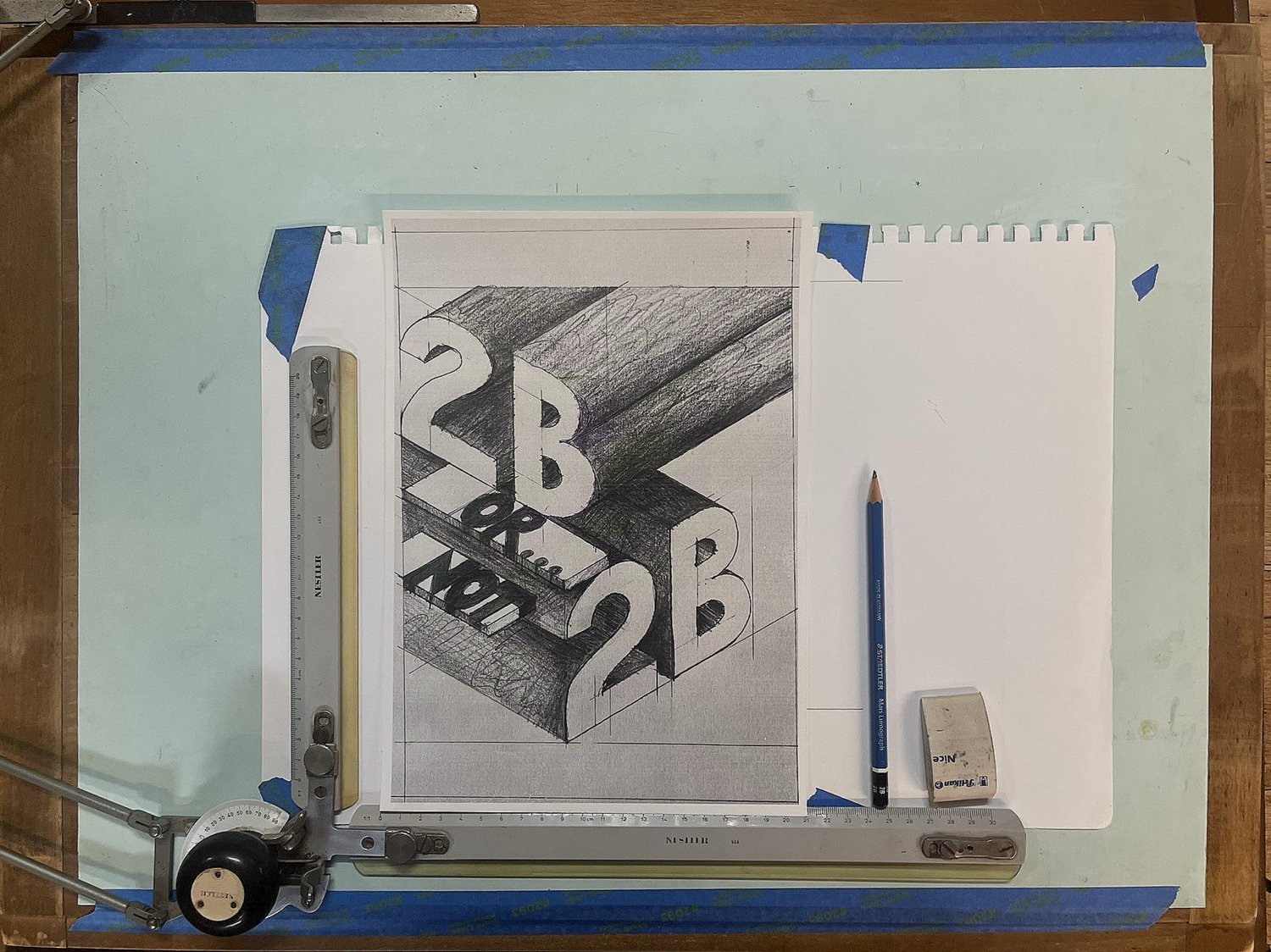Bob Sinclair
2b or not 2b. 2023
Make a mark, draw it, paint it, just do it!
Drawing/painting is everywhere. We are surrounded by it. It is part of our lives, we start as children without even thinking about it, as architects we continue to draw to think and explore particular possibilities.
We can all draw/paint in our own way, but we sometimes fail to recognise the things that are particular or special about our way of drawing/painting. We never quite know what others will see in our work, is our work good enough? It’s an anxious time for most, our work mirrors us, here on the gallery wall we are all exposed.
Drawing and painting offers us an incredible range of possibilities, whilst it records the deliberations and ideas of the maker the drawing/painting may forever remain incomplete. I often find the best work is old incomplete drawings left in the draw.
Haven’t we all found an old drawings by our children only to proudly resurrect and pin on the fridge door.
Picasso said : “ he spent 80 years learning to draw like a child” .
Roger Nelson
2b or not 2b. 2023
The idea of a drawing is not that it’s perfect but that it takes thought further and towards some sort of higher resolution.
It’s used to explain where words or speech cannot.
It’s thinking, adjusting, experimental and immediate and as communication is often salient and better than words.
It’s as direct a relationship between thought and tactile expression that has some endurance, and it allows the author to make a step to another place.
Often crude and sometimes highly resolved a drawing enable thought in a 3-dimensional world conveyed in 2 dimensions.
To make a mark (by whatever means) starts to define things on either side the mark and can capture emotion, feeling , a direction , an explanation . In fact, so much so, it can defy the simplicity of the action of drawing because it can capture so much.
Architects constantly think in 3 dimensions and many illustrate their thoughts prolifically and in many and varied ways.
From the highly codified world of technical drawing where convention and well followed methods allow unambiguous direction and instruction amounting in built form.
Then to illustration, the capturing of the essence of an idea and a feel where personality and the signature techniques of the author are rich and unique.
It can also be simply prosaic and in a moment explaining a collective agreement on how something should be made.
Then to the highly expressive and indeed romantic. Often abstract and stripped down or rich and sumptuous.
The exhibition sets thought aside from the digital world and allows a directness and immediacy.
Collecting 40 or so architects together to make this inaugural exhibition has been exciting and extremely rewarding. Everyone approached it with enthusiasm and support for the central role drawing has in the work of an architect. It also was welcomed and indeed challenged the idea that with these skills, things could taken further to delve into artistic endeavour.
We have definitely struck a chord and opened up the opportunity to take this further and engage with the wider world of drawing as art.
It’s ignited some unrealised and deep-rooted thirsts for expression within the group approached coupled with those that have made that leap and are confident and capable in their own right.
With all the works so kindly being donated by their authors we have approached the Australian Institute of Architects (Victorian Chapter) to initiate, with the proceeds, an annual drawing prize as part of the awards program.
We really appreciate this support and indeed recognition that drawing is at the root of architectural practice and that we should celebrate it as central to our being.
And with great pride in the collective effort ….Welcome to our world.



